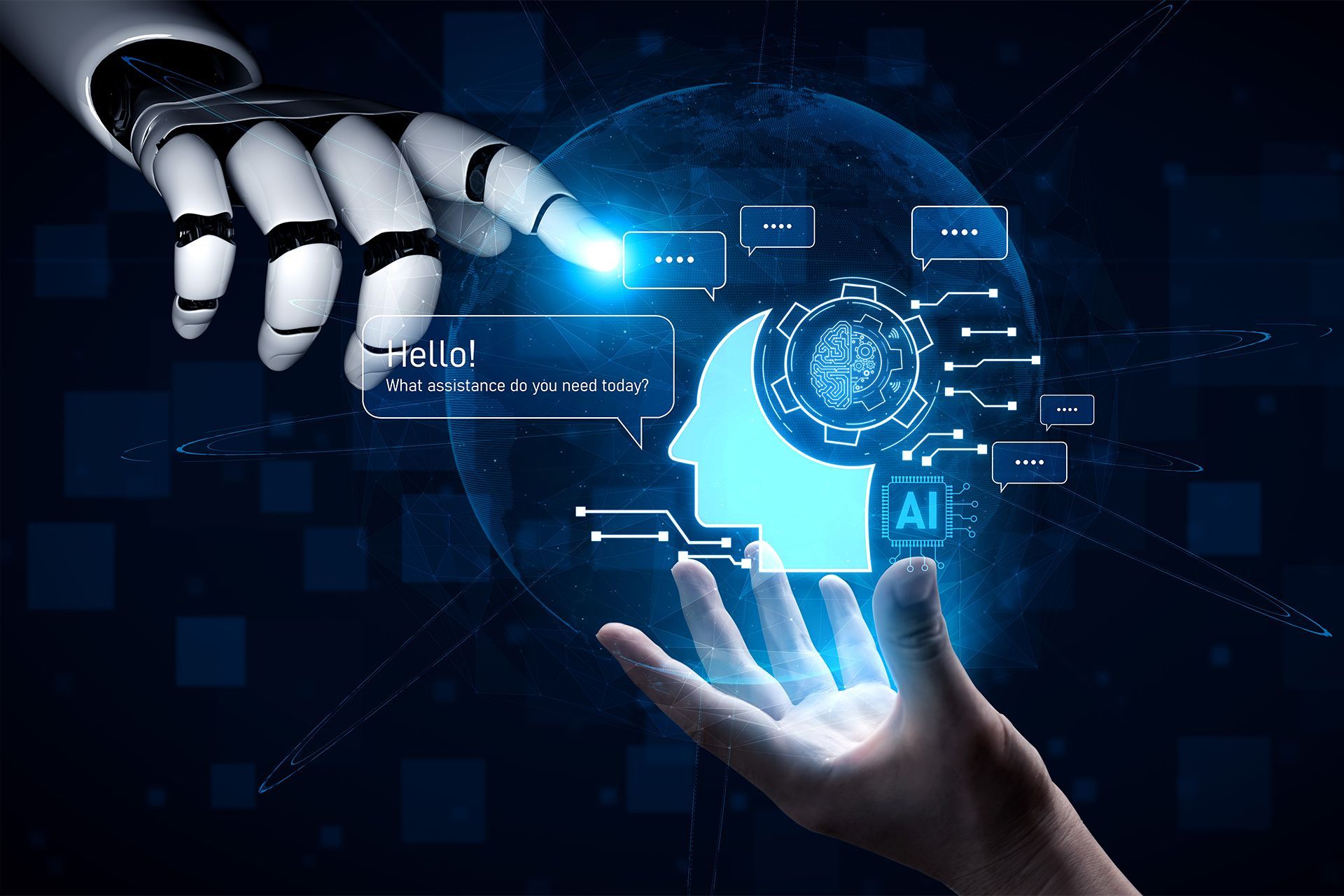Real-Time Chatbots Explained: How They Work and Why They Matter

In today's digital world, businesses are constantly looking for ways to improve customer experience and make communication faster and more efficient. One technology that has become increasingly popular is the real-time chatbot.
If you've ever visited a website and immediately seen a chatbox pop up, asking if you need assistance, you've interacted with a chatbot. But what exactly is a real-time chatbot, and how does it work?
In this article, we will explore these questions in detail and help you understand why real-time chatbots are changing the way businesses interact with their customers.
What Is a Real-Time Chatbot?
A real-time chatbot is an AI-powered tool designed to engage in conversation with users instantly. Unlike traditional chat systems where responses may take time due to human involvement, a real-time chatbot provides immediate answers to customer questions or problems. It operates in real time, meaning there’s no delay between when the user asks a question and when they receive a response.
These chatbots are built on artificial intelligence (AI) and natural language processing (NLP) technologies, which enable them to understand, interpret, and respond to human language in a way that feels natural. Whether it's answering frequently asked questions, solving problems, or even helping make a purchase, real-time chatbots are a valuable tool for businesses looking to enhance their customer service.
How Does a Real-Time Chatbot Work?
At the heart of any real-time AI chatbot is machine learning (ML) and natural language processing (NLP). These technologies enable chatbots to understand human language, regardless of the phrasing, spelling, or grammar used by the user.
Here’s a breakdown of how a real-time chatbot works:
- User Interaction: When a user visits a website or app that has a real-time chatbot, they are usually greeted with a pop-up chat window. The chatbot may ask a general question such as, “How can I help you today?” or it may prompt a specific action, like “Need help with your order?”
- Understanding the Query: Once the user types a message, the chatbot uses NLP to process the text. NLP helps the chatbot recognize the user’s intent and the meaning behind their words, which is essential for providing an accurate response.
- Searching for the Right Information: After understanding the user's message, the chatbot will search its database of pre-programmed responses or connect to external databases, like a company’s knowledge base, to find the most relevant information. For example, if the user asks, “What are your business hours?” the chatbot will instantly provide the hours without needing human intervention.
- Response Generation: Based on the information retrieved, the chatbot will generate a response. AI chatbots are designed to give natural-sounding replies. These responses are often conversational, making it seem like the user is talking to a real person. If the chatbot doesn't have an answer to a specific question, it may escalate the query to a human agent for further assistance.
- Continuous Learning: One of the key features of AI chatbots is their ability to learn over time. With each interaction, chatbots can improve their responses by analyzing previous conversations. Machine learning algorithms help the chatbot get better at understanding user needs and providing more relevant answers in the future.
Key Benefits of Real-Time Chatbots
Real-time chatbots offer a variety of benefits to both businesses and users. Here are some key advantages:
- Instant Response: One of the primary benefits of using a real-time chatbot is its ability to provide instant responses to customer inquiries. Users don’t have to wait on hold or wait for an email response. This leads to a better user experience, as customers don’t like being kept waiting.
- 24/7 Availability: Unlike human customer support agents who need breaks and rest, chatbots are available 24/7. This means that no matter when a customer visits the website or app, they can get assistance anytime, day or night.
- Cost Efficiency: Real-time chatbots can handle a large number of inquiries at once, reducing the need for businesses to hire large customer support teams. This helps businesses save money on staffing while still offering high-quality service to their customers.
- Personalized Interactions: Many chatbots are equipped with machine learning capabilities that allow them to offer personalized experiences. For example, chatbots can remember a user's previous interactions and tailor responses accordingly. This helps businesses build better relationships with their customers by providing relevant information and recommendations.
- Improved Customer Satisfaction: With quicker response times, personalized assistance, and 24/7 availability, real-time chatbots help improve overall customer satisfaction. Happy customers are more likely to return and recommend a business to others.
Types of Real-Time Chatbots
There are several types of real-time chatbots, each designed to serve a specific purpose. The two most common types are:
- Rule-Based Chatbots: Rule-based chatbots follow a predefined set of instructions or rules. They are generally programmed to answer frequently asked questions or guide users through a set process. While they are easy to set up and use, they are limited in their ability to understand complex or unique questions.
- AI-Powered Chatbots: AI chatbots, on the other hand, use machine learning and NLP to understand a wide variety of questions and provide more advanced responses. These chatbots can handle complex queries and continue learning from interactions, making them more adaptable over time.
How Businesses Can Benefit from Real-Time Chatbots
1. Lead Generation:
Real-time chatbots can help capture leads by engaging users as soon as they visit a website. They can ask qualifying questions, gather contact information, and even schedule appointments.
2. Customer Support:
Real-time chatbots can answer common questions, direct customers to the right resources, or even escalate complex issues to a human agent. This can reduce wait times and ensure customers get the help they need quickly.
3. E-commerce Assistance:
In e-commerce chatbots can assist customers by recommending products based on their preferences, offering discounts, and guiding them through the purchasing process. This increases sales and customer satisfaction.
4. Data Collection:
Real-time chatbots can collect valuable data on customer preferences, pain points, and feedback. This information can help businesses improve their products and services.
Best Practices for Implementing a Real-Time Chatbot
If you’re considering implementing a real-time chatbot for your business, here are a few best practices to ensure it delivers the best results:
- Clear Communication: Ensure your chatbot is clear about its capabilities. Let customers know that they’re talking to a bot and what it can help them with.
- Continuous Monitoring: Even though chatbots work automatically, human intervention is sometimes necessary. Monitor chatbot conversations and be ready to jump in when needed.
- Regular Updates: To keep your chatbot functioning well, update its knowledge base regularly. Adding new answers and refining existing responses will help the chatbot stay useful and relevant.
- Test and Improve: Before fully deploying your chatbot, test it with different customer queries. Regularly analyze the interactions to identify areas where the chatbot can improve.
Real-Time Chatbots and Customer Experience
Real-time chatbots are quickly becoming a staple of modern customer service. By offering immediate responses, assisting with a variety of tasks, and providing 24/7 customer support, these chatbots are making it easier for businesses to serve their customers effectively.
Whether you're a small business or a large corporation, implementing a real-time AI chatbot can help improve customer experience, reduce operational costs, and boost overall satisfaction.
If you're looking to enhance your customer service, consider implementing a real-time chatbot to take your business to the next level!
Ready to integrate a real-time chatbot into your business? Contact ChatArm today and discover how our AI chatbot solutions can help improve your customer support.
Disclaimer: The information on this website and blog is for general informational purposes only and is not professional advice. We make no guarantees of accuracy or completeness. We disclaim all liability for errors, omissions, or reliance on this content. Always consult a qualified professional for specific guidance.






